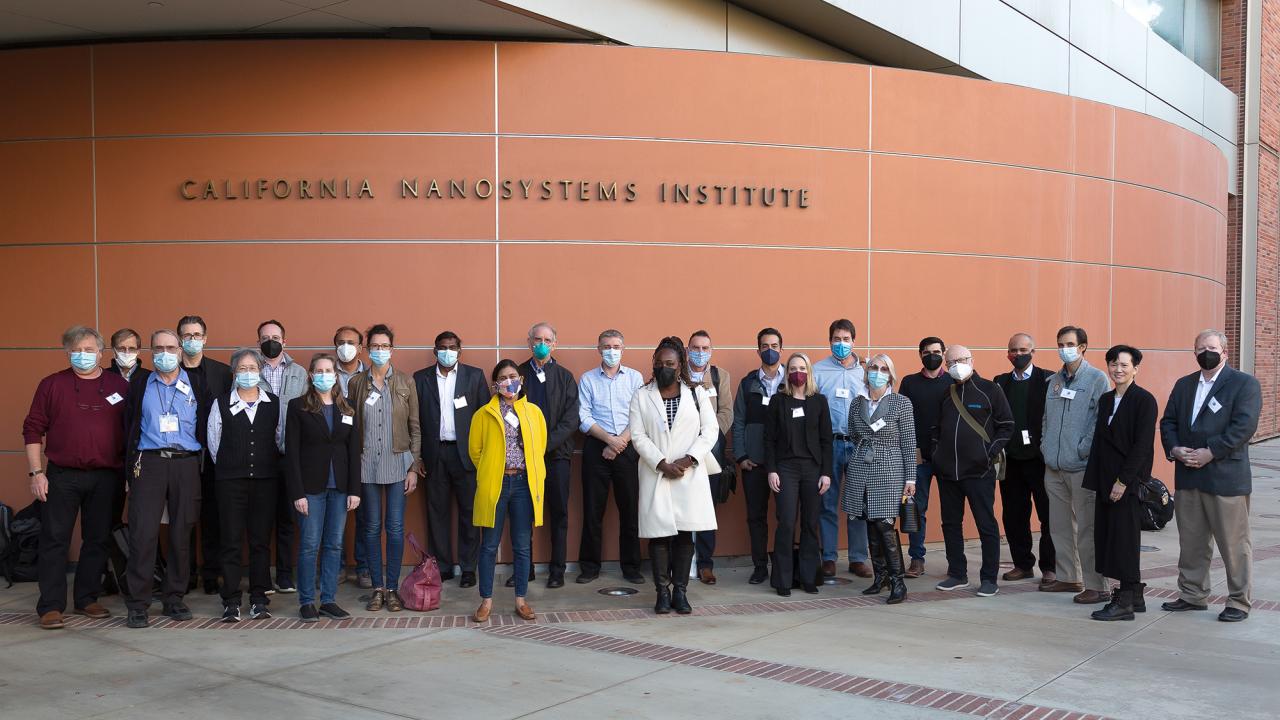Harnessing the research and scientific brainpower needed to treat and prevent the next pandemic is the goal of a new consortium of University of California campuses and national laboratories. Named ATTACK, the group integrates expertise and resources from UC campuses at Los Angeles, San Diego, Davis, Berkeley, Irvine and Riverside; the Lawrence Livermore and Sandia National Laboratories and 13 industry partners.
“Putting such expertise under one roof will help alleviate much of the silos that have plagued previous antiviral drug development,” said Brigitte Gomperts, professor of pediatrics and pulmonary medicine and a center director and principal investigator of a recent ATTACK consortium proposal to develop antiviral drugs to treat and prevent future pandemics.
The ultimate, overall goal is to be prepared for the next pandemic, Gomperts said.
Participating researchers from UC Davis include: Satya Dandekar, Jeremy Chien, Kit Lam, Ruiwu Liu, Chun-Yi Wu and Michael Rogawski, School of Medicine; Kent Lloyd, School of Medicine and Mouse Biology Program; Lark Coffey, School of Veterinary Medicine; Chris Miller, School of Veterinary Medicine and Center for Immunology and Infectious Diseases; Priya Shah, College of Engineering; and Koen Van Rompay, California National Primate Research Center.
Collaboration and expertise
When the next pandemic arrives is a matter of when, not if, according to the researchers. The ATTACK Consortium is bringing together the top minds across drug discovery and development and actively seeking additional funding opportunities to expand the scope of their work.
Fifty researchers in antiviral drug development recently gathered in-person and virtually at the California NanoSystems Institute at UCLA to extend the robust collaboration of research, resources and support.
“The ATTACK Consortium is bringing ideas from the bench to the bedside through motivation, collaboration and trust,” said David Smith, an infectious disease physician, professor of medicine at UCSD, and a center director and principal investigator for the group. “We have partners as part of the consortium who can move ideas and discoveries to the clinic through their expertise and abilities and that is enabling us to work at a quick pace.”
The ATTACK Consortium meeting has allowed new collaborations and experiments to get off the ground. The group has quickly developed a pipeline to take antiviral therapies from discovery through pre-clinical testing and entering human trials.
“We have picked up the ball and we are running with it,” said Smith. “We have learned from past pandemics as far back as the HIV virus 40 years ago and those that have come since (Ebola, Zika, MERS, SARS) and we are better at predicting what viruses may present in the future and the hope of this group is to develop what treatment could be used for them.”
The consortium is organized into five key integrated research projects and four scientific cores. The consortium provides a rigorous pipeline for antiviral drug discovery, identification of specific viral targets and drug optimization with initial work on coronaviruses, enterovirus D68, dengue virus and Nipah virus.
Members of the consortium have already been able to work very quickly to find new potential therapeutic strategies for the omicron variant of SARS-CoV-2. Team members recently finished the characterization of therapeutic nanobodies (a form of antibodies) that have activity against omicron, as well as the previous delta variant. Researchers also found an RNA inhibitor that targets omicron. Both strategies could be foundational for new broadly acting SARS-CoV-2 therapeutics.
National laboratory, industry resources
The speed of collaboration is underscored by support from the national laboratories and industry partners. The Department of Energy’s 17 national labs tackle the critical scientific challenges of our time and possess unique instruments and facilities, many of which are found nowhere else in the world. They address large-scale, complex research and development challenges with a multidisciplinary approach that places an emphasis on translating basic science to innovation.
“The national labs have resources and interest in antiviral drug discovery that adds another dimension to what we can do,” said Robert Damoiseaux, professor of molecular and medical pharmacology and bioengineering at UCLA and director of the Molecular Screening Shared Resource at the CNSI.
Felice Lightstone is the group leader of Biochemical and Biophysical Systems and Associate Program Lead for Medical Counter Measures at Lawrence Livermore National Laboratory.
“The national labs offer not only high-performance computing and BSL-3 (Biosafety level) laboratories for select agent research,” said Lightstone. “We make technologies that can make the drug design process more efficient and more effective.”
The national labs also bridge academia and industry, having a long process of collaboration with nonprofits and government entities.
Media Resources
Hear more from the recent ATTACK Consortium conference.
Read the full news release here.
Nicole Wilkins is director of strategic communications at the California Nanosystems Institute, UCLA.
